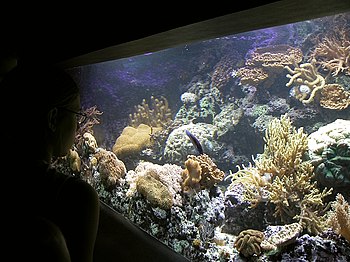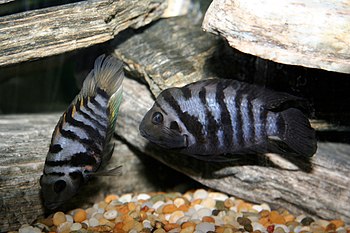 |
| Colorado River Toad, Incilius alvarius, Syn.: Bufo alvarius (Photo credit: Wikipedia) |
The first care tip is handling. You should handle your toad as little as possible, and, especially if you have other pets in your home, always wash your hands both prior to and subsequent to touching your toad. This is because the skin of an amphibian is permeable, which is to say it is porous, and any toxic substances on your hands may easily be absorbed into their bloodstream. The reason why you should always wash your hands after touching the toad is that of the venom glands located on their head and legs. The toad venom has a milky appearance, and it may be sufficiently toxic to kill a small cat or dog. It can also cause serious irritation to eyes and nose, so make sure never to touch your face until after your hands have been cleaned following toad handling.
Toads are sensitive to light, sound, and vibrations, so their housing should be kept in a quiet place where there is not a lot of noise and goings-on. Never put their aquarium on top of a stereo speaker or TV set, or even near them, because the vibrations are not good for them. Toads are nocturnal animals. They rest in the daytime and come out at night, so the place where you house your Bufo Alvarius toad should not be too brightly lit.
Probably the best place to keep your toads would be in an aquarium of a twenty-gallon size or larger. These toads are very large and they are excellent at jumping, so make sure their aquarium has a cover that fits snugly. During the day, they like to burrow into the ground to conceal themselves, so the aquarium should have a floor made not with soil but with chunks of bark, smooth stones that are too big for them to swallow, peat moss or sphagnum moss that has been dried. These are cold-blooded animals, which means their body temperature comes from their environment, so keep your Bufo Alvarius in a place where the temperature ranges from 24° to 27° C or 75° to 80° F. Their living space should not be wet, but they do need a bowl of non-chlorinated water. They don't drink the water, but they immerse themselves in it, absorbing it through their skin.
Feeding your pet toad should not be too problematic if you live in an area where there are lots of insects such as crickets, or at least a pet shop that sells them. In the wild, they eat anything from small rodents and fish to bees, wasps, and scorpions. These Colorado River toads even eat smaller frogs and toads.
If you keep your toad's accommodations clean and comfortable and take proper steps to look after them, you should be able to enjoy the company of your Bufo Alvarius for many years.
|






